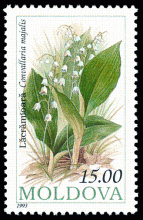The Western Yellow-Billed Cuckoo, A Vanishing California Songbird, Needs Greater Protection, American Bird Conservancy Urges
The U.S. Fish and Wildlife Service wants to protect a vanishing California songbird by listing it as Threatened under the Endangered Species Act, but a national bird protection group says that doesn't go far enough. The Washington D.C.-based American Bird Conservancy (ABC) says that USFWS should give the western yellow-billed cuckoo full Endangered status, which would give the bird greater protection. A subspecies of the far more widespread yellow-billed cuckoo, the western yellow-billed cuckoo (Coccyzus americanus occidentalis), has seen between 90 and 99 percent of its preferred riparian forest habitat destroyed in California. Fewer than 500 breeding pairs of the birds remain in the United States. USFWS proposed the western yellow-billed for listing as Threatened in October, as part of a 2011 agreement with the Center for Biological Diversity to rule on listing proposals for 757 imperiled species. ABC made its recommendation for greater protection in a December 2 letter that the group made public December 6.










